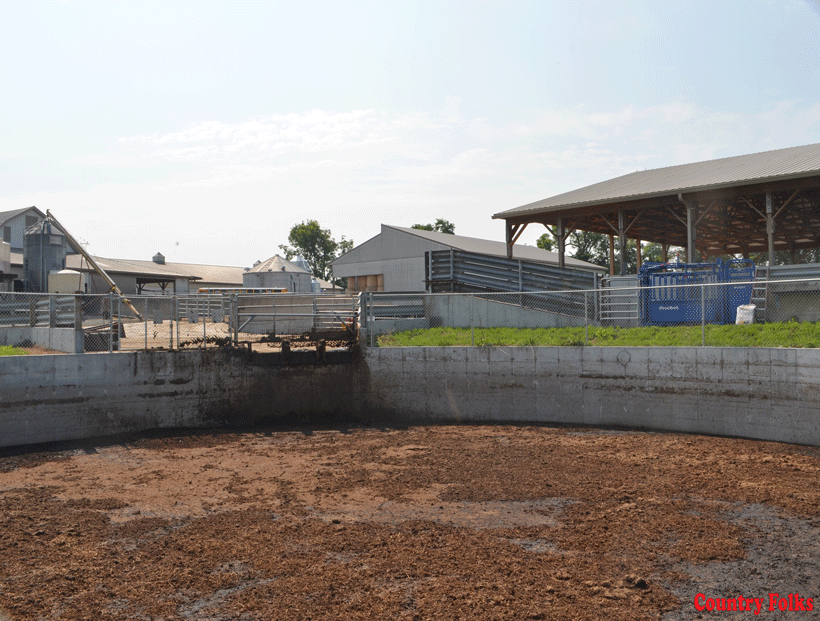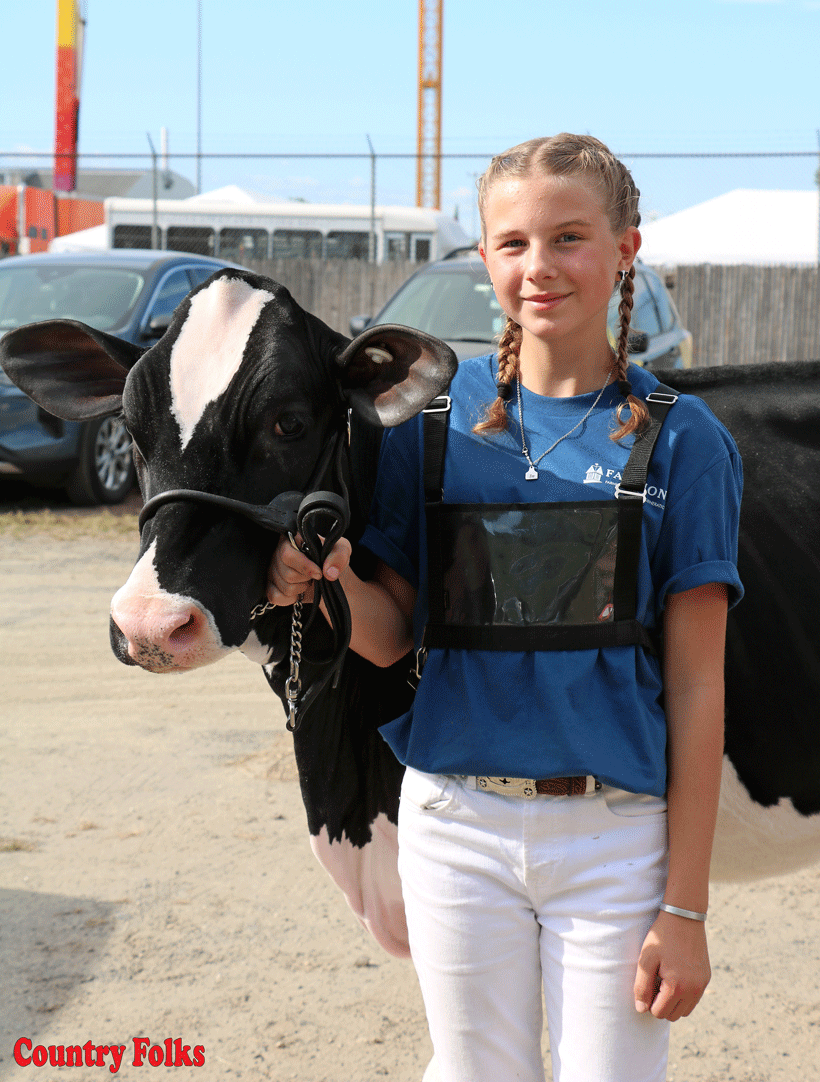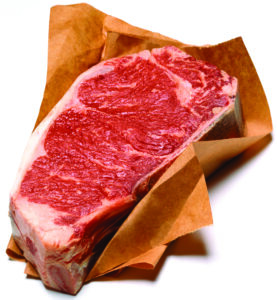When a barnyard is partially in concrete and the pasture is little more than holes left by the hooves of beef cattle, what’s the answer? In Craig Alleman’s case, the best solution was more concrete.
Alleman’s farm was a mess, with mud and pugging throughout the pastures. Pasture vegetation didn’t stand a chance because it was always wet and trampled by cattle. While Alleman knew the conservation district had funds to mitigate manure and drainage issues, he was hesitant to invite them to visit his farm to assess the situation and discuss available help.
“I knew I had a water issue,” said Alleman. “Manure and water were running toward two ponds and a creek.” When he realized that the conservation team was there to help, not criticize, he and the team worked together to create a plan and complete the project.
Some of the “before” photos of Alleman’s Franklin County, PA, farm are of beeves on pasture – an area that was so wet it created boot-sucking mud and was nearly impossible to mow. To make matters worse, terrain in the cattle area varied from slightly hilly to extremely steep, which factored into water and manure flow.
Alleman worked with district personnel to create a plan that involved using what he had already installed along with new concrete areas, a 10-foot deep by 66-foot manure storage pit, a 120-by-60-foot bedded pack barn and lots of pipe. He invested more than $30,000 in plastic pipe, but it solved the drainage issues on the farm. Downspouts on buildings are tied into the drainage system.
Although pits are most often used on dairy farms where output is more liquid, a pit proved to be the answer for Alleman’s farm. “There’s so much concrete that when it rains an inch, it puts four inches in the manure pit,” he said. “There’s plenty of water – I don’t have any trouble with manure [in the pit] being too thick.”
Project engineer John High explained pit sizing: “We took what would come from the existing barnyard plus the estimated new barnyard and sized the tank for a 25-year storm,” he said. “At the start of the project, there were 200 animals, so we figured 50% of their manure would go to the pit and the rest would be stacked in the stack pad.”
Because Alleman had made improvements on his own prior to the conservation project and what he had done was working, High wanted to incorporate the existing concrete and structures.
“That’s where the pit comes in,” said High. “We could now collect all this runoff. When there are existing facilities, we try to use them the best we can. The easiest thing to do was to put a pit in – it’s a hole in the ground and some concrete.”
The push-off for the pit is next to the pump-out rather than on the opposite side of the pit. This works well because the pump can be dropped into the pit from a solid concrete surface, pumped and then driven away.
“We hit groundwater when we dug the pit,” said Alleman. “We wanted to make it a little lower, but it works fine. When it rains two inches it takes water to the top of the eight-inch curb because the water has accumulated in the sloped area.”

The manure pit is adjacent to the animal housing areas, and has enough water added through rainfall runoff that the beef manure is easy to handle. Photo by Sally Colby
During winter and spring 2023, Alleman and the conservation team worked on BMP structures. In October 2023, community volunteers planted 540 trees and shrubs on three acres of steep swales at a density of 185 trees/acre. This riparian buffer was done through the Chesapeake Bay Foundation’s Keystone Ten Million Tree Partnership. At the head of the riparian buffer, a large outlet pipe deposits clean water that heads downstream.
The project received Growing Green funds through the Chesapeake Bay Foundation, which helped cover out-of-pocket funds for the project. Alleman also received funds for site preparation for tree planting and buffer maintenance.
The existing concrete and extreme slopes proved to be an advantage for the project. A combination of grading and the roof and gutter system sends water toward drainage pipes and through a French drain, then into the riparian buffer that filters water prior to it entering ponds and ultimately, the stream that flows to the Chesapeake Bay.
“Putting all the pipes underground made the area usable and nice,” said Alleman. “I can maintain it now – there are no ravines, just a nice smooth hay field or pasture.”
Alleman strips the two feet of accumulated bedded pack barn twice a year. “When the corn comes off, I’ll strip the barns and apply all the manure from the pack areas to the fields. I don’t compost it.”
Liquid manure is hauled by a manure hauler for application on Alleman’s rental property.
The manure stack pad was already in place, and Alleman said there’s plenty of rainwater to keep it functional.
High said even if the only thing they did was create a heavy use area (HUA), they still would have had to create a collection system for all the existing barnyard. “It’s easier to collect it in a tank and tie in the barnyard and buildings as best we could,” said High.
Alleman scrapes manure directly into the pit with a rubber tire scraper. “We went with the pit because there was already a lot of concrete here,” he said. “We had to have collection for the runoff. Everything is still contained – it can’t get away.”
While manure regulations and technical assistance funds vary by state, it’s worth contacting the local Soil & Water Conservation District to see if there’s help for any farm.
by Sally Colby











Leave A Comment